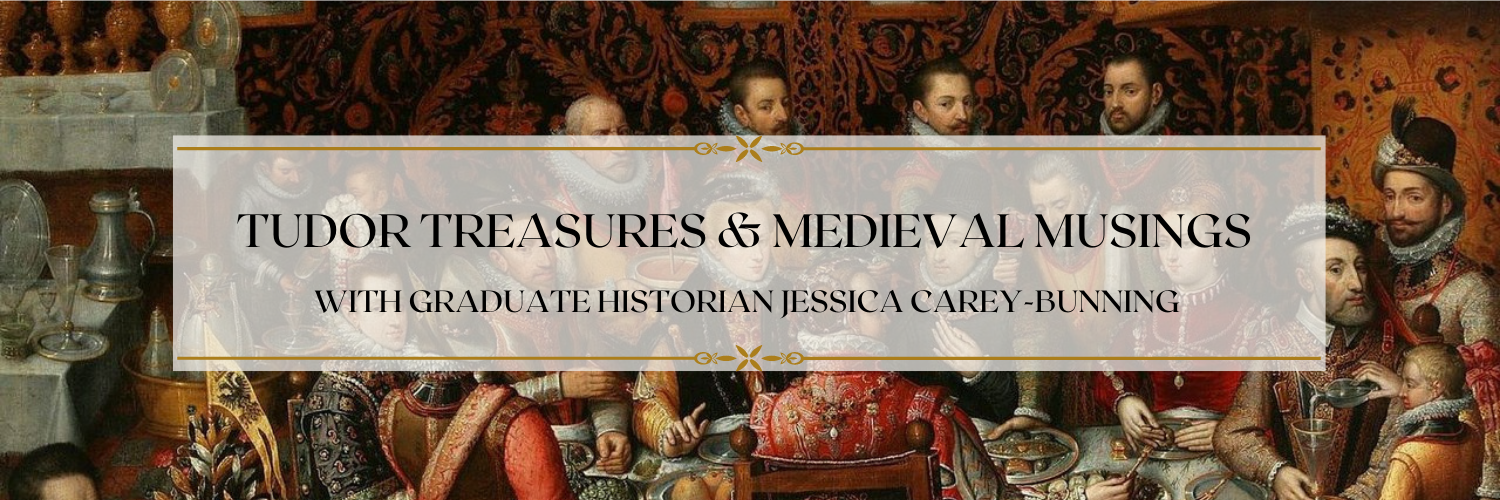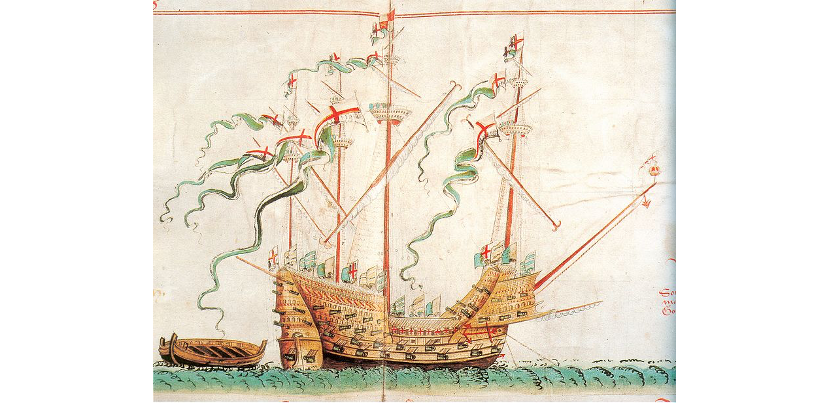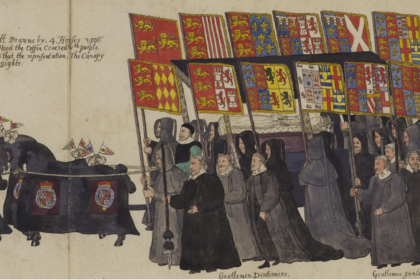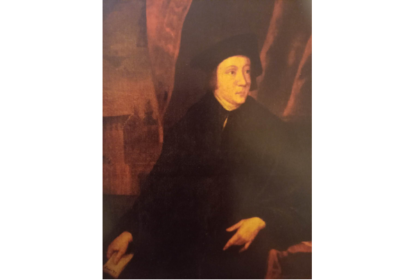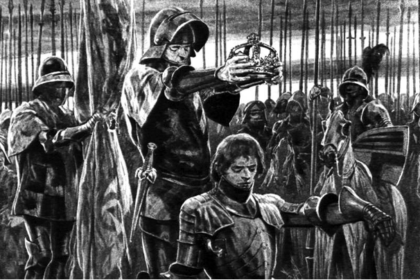During Henry VIII’s reign, a group of ladies travelled to Southampton to view a new great ship that had been newly constructed. Whilst there, they wrote a letter to Henry, thanking him for allowing them to make the journey, and flattering him by regretting his absence.
The letter is dated to the 4th of August, but no year is included. There are clues, however, to suggest when it was written.
~
Most gratiouse and benigne sovraigne Lorde, please it your Highnes to understonde that wee have seene and beene in your newe Greate Shippe, and the rest of your shippe at Portismowth, wich arr things so goodlie to beeholde, that, in our liefs wee have not seene (excepting your royall person and my lord the Prince your sonne) a more pleasaunt sight; for wiche, and the most bountiful gifts, the chere and most gratiouse enterteignment, wich your Grace hath vouchsavid to bestow upon us your most unworthie and humble servants, wee rendre and send unto the same our most humble and entier thanks wich wee beseech your Majestie to accept in good parte, advertising the same that there rest nowe but only ii sorowes; the tone for lacke of your royall presence that ye might have seene your said Shippes, nowe at this tyme whan wee might have waited on your here; the toodre that we thinke long til it may eftsones lieke you to have us with you, wiche wee all most hertely beseech our Lord God may bee shortely; who preserve your most noble person, and my Lord Prince, and graunte you bothe to reigne over us; Your Majesty many yeris, His Grace with long continuance but by late succession, as never Princes did before You. From Your Majesties havon and towne of Portismowth the iiiith of August. Yor Highnes most bounden and humble servants, and beadwomen Mabyell Sowthampton Margaret Taylebois Margrett Howarde Alys Browne Anne Knevytt Jane Denny Jane Meows Anne Basset Elizabeth Tyrwhyt Elsabeth Harvy
~
The first, and most obvious clue is that Prince Edward is mentioned, so it must have been written after his birth on the 12th October, 1537, and before Henry’s death on the 28th January, 1547.

There are several clues which point to the letter being written at some point when Henry was between wives: either between Jane Seymour’s death in October 1537 and Anne of Cleves’ arrival in January 1540; or between Catherine Howard’s execution in February 1542 and Henry’s marriage to Catherine Parr in July 1543. The fact that no queen is mentioned is significant; the very fact that the letter is addressed to the King and not to a royal mistress is surprising. We would expect that a group of ladies of the court would need their queen’s permission in addition to the King’s. Following from this is the fact that they had the time to travel to Portsmouth, and were not occupied with attending a queen. Given these details, I am confident that the trip and letter must be set in on the 4th August of either 1538, 1539, or 1542.
We can narrow the dates further by examining the ladies who attended the trip. After Jane’s death and Catherine Howard’s arrest, their households were disbanded. Whilst at least a number of these ladies did serve as attendants to various Tudor queens, most of them were also the wives of Henry’s courtiers, which is why they continued at court during these periods. It is the identity of one particular woman, however, who can help us with the dates.
The Margaret Taylebois mentioned was the wife of George, Lord Talboys, who interestingly was the son of Henry’s former mistress Bessie Blount. Margaret herself was also rumoured to be Henry VIII’s mistress in 1538. Margaret and George married in April 1539. If the trip had taken place prior to this, we would expect to see her unmarried name, Skipwith.
What do we know about the other ladies on this trip?
Mabyell Sowthampton
Mabyell Sowthampton was the wife of William Fitzwilliam, Earl of Southampton, who was Admiral of England at this time. Due to his position, it is perhaps logical to imagine that he played a role in organising the trip.
Margrett Howarde
Margrett Howarde most likely refers to the second wife of Lord Edmund Howard, the father of Catherine Howard, making Margrett the future queen’s stepmother. This trip would have taken place some 4 months after Edmund’s death. Perhaps her inclusion was an attempt to lift her spirits.
Alys Browne
Alys Browne was a lady married to Sir Anthony Browne, who was the younger half-brother of William Fitzwilliam, Earl of Southampton. He also served as Master of the Horse to Henry VIII.
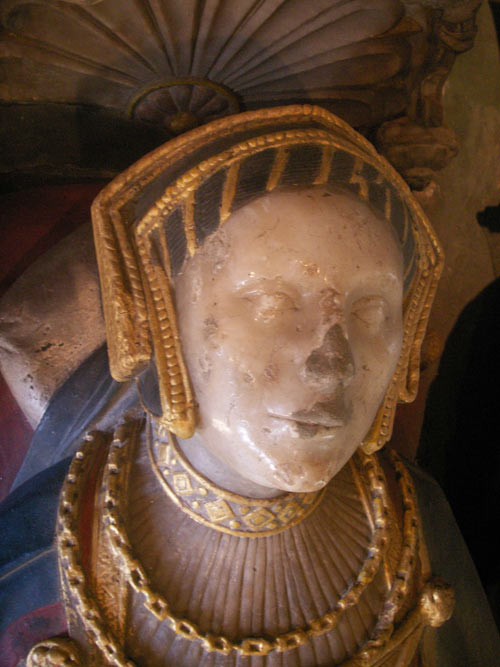
Anne Knevytt
Anne Knevytt was the widow of Francis Weston, one of the unfortunate men executed alongside Anne Boleyn. You can read about the letter Francis sent his wife here: . After Francis’ death, Anne quickly remarried. Her spouse at the time of this letter was Sir Henry Knevytt, a Gentleman of the Privy Chamber.
Jane Denny
Jane Denny is probably Joan Denny, nee Champernowne (probably the niece of Katherine Astley, nee Champernowne, governess and later First Lady of the Bedchamber to Elizabeth I). She married Sir Anthony Denny, Henry VIII’s Groom of the Stool.
Jane Meows
Jane Meows is the lady with the most question marks around her. The closest name of a Tudor courtier I can come up with is Jane Meutas (also spelled Mewtis or Meautis), who was an attendant of Jane Seymour. Her husband, Peter Meutas, was made Comptroller of the Royal Mint and Overseer of Artillery in 1537. Her maiden name was Astley, possibly making her a kinswoman by marriage of the abovementioned Jane/Joan Denny. This identification is very tentative; however, I have yet to find a closer match.
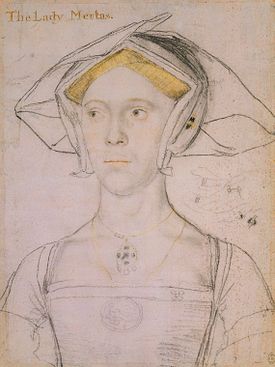
Anne Basset
Anne Basset was the one lady on the trip that we know was unmarried at the time. She had joined Jane Seymour’s household a few short months before the latter died in October 1537. After Jane’s death it is possible she was taken into the household of Frances Radcliffe, Lady Sussex, one of the most senior members of Jane Seymour’s household and wife of prominent courtier Robert Radcliffe, Earl of Sussex and Chamberlain of the Exchequer. Anne was also rumoured to be a mistress of Henry VIII around this time.
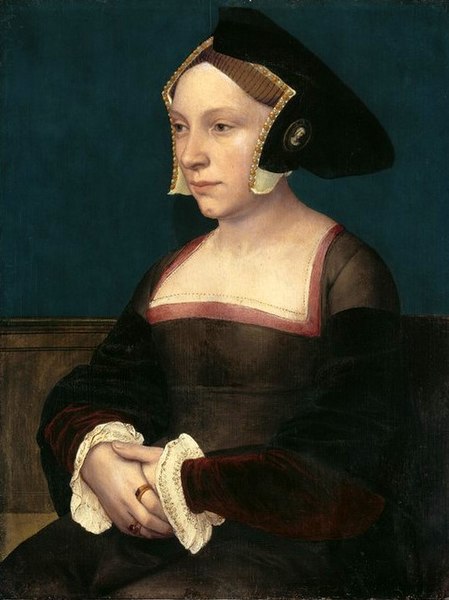
Elizabeth Tyrwhyt
Elizabeth Tyrwhyt was another lady who had served Jane Seymour. Her husband, Robert Tyrwhitt, served Henry VIII as an Esquire of the Body.
Elsabeth Harvy
Elsabeth Harvy was another possible mistress of Henry VIII, believed to have been one of his ‘diversions’ during a pregnancy of Anne Boleyn. Little else is known about Elsabeth, however, I believe she may have been the Elizabeth or Isabel Harvey who was the wife of Sir Humphrey Radcliffe, who himself was the son of Robert Radcliffe, Earl of Sussex, who was mentioned above in connection with Anne Basset.
~
Returning to our search for a date, we can rule out August 1538, as Margaret Taylebois had yet to take her married name at that time, which leaves us with 1539 and 1542. To make an informed judgement as to which date is more likely, we need to look at the development of Henry VIII’s navy.
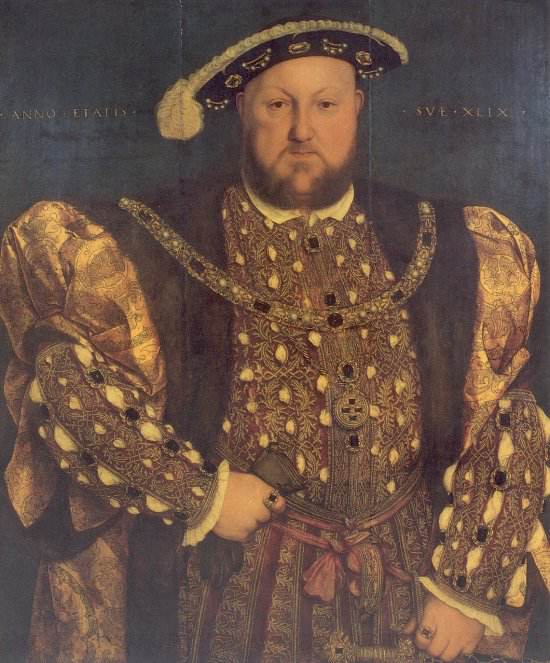
The letter talks about seeing ‘your newe Greate Shippe.’ Unfortunately the letter does not specify which ship this refers to. From 1536-39, Henry VIII upgraded and rebuilt many of the ships in his fleet. This was due to the increased threat of invasion which came along with his break from the Catholic Church; he needed to be prepared just in case. Whilst in the latter years of his reign other ships were rebuilt sporadically as needed, there was nothing to compare with the undertaking of 1536-1539. There were no brand new ships built in this period; it is most likely that the letter refers to one of the rebuilt ships. From my research, no other ships were purchased, built or rebuilt between this period of ship-work, and 1542. Therefore, we can be reasonably sure that this letter was written in August 1539.
It is impossible to say for certain which ‘Greate Shippe’ they toured; though they clearly saw several – ‘and the rest of your shipped’ – there was one which stood out from the crowd. There are several contenders. Great ship was a category based on size, but had no specific definition. The famous Mary Rose, and the Peter Pomegranate, were both classified as great ships, and were rebuilt in 1536. There is one ship which I believe is more likely to have been the one described by the ladies – the Henry Grace à Dieu, popularly known as the Great Harry. Rebuilt in 1539, this was the largest of Henry VIII’s ships, measuring more than 50 metres in length and weighing around 1000 tonne. Of all Henry’s ‘newe’ ships, both in name and in date of rebuild, it makes the most sense for the Great Harry to have been the ship the ladies visited in Portsmouth in August 1539.
So, in summary, by looking at the clues within the text of the letter, the identities of the ladies who wrote the letter, and the development of Henry VIII’s navy, we can say with reasonable confidence that it was written on the 4th August, 1539, by a group of wives of Henry’s courtiers, upon a visit to the newly rebuilt ship, the Great Harry.
Top image: Illustration of the ship Henri Grace a Dieu, also known as Great Harry, c.1546
